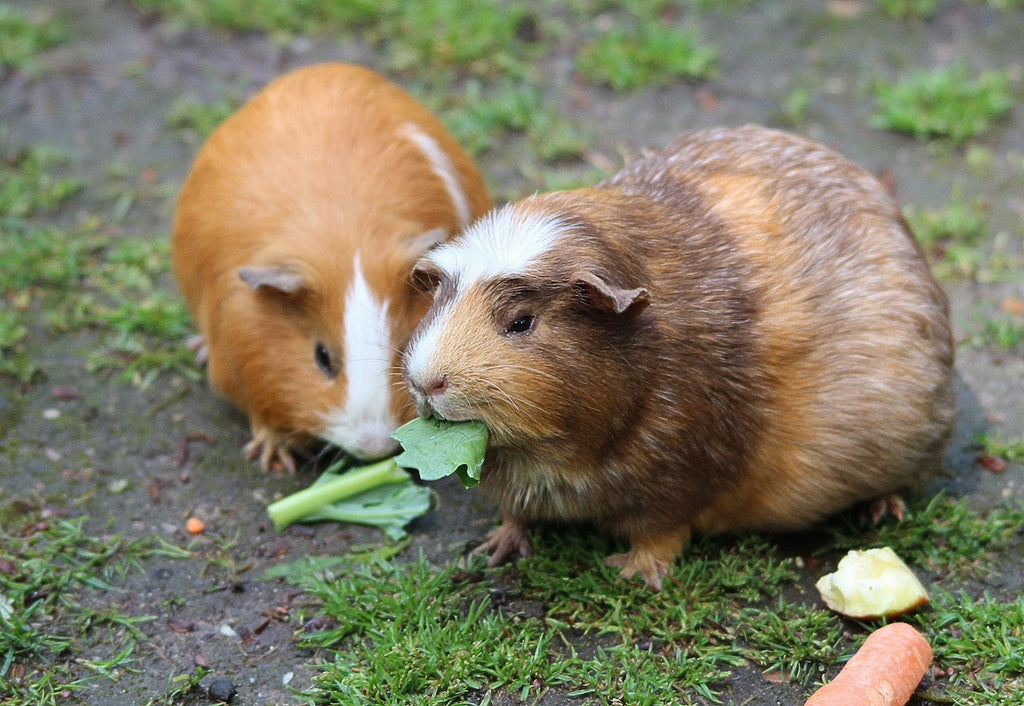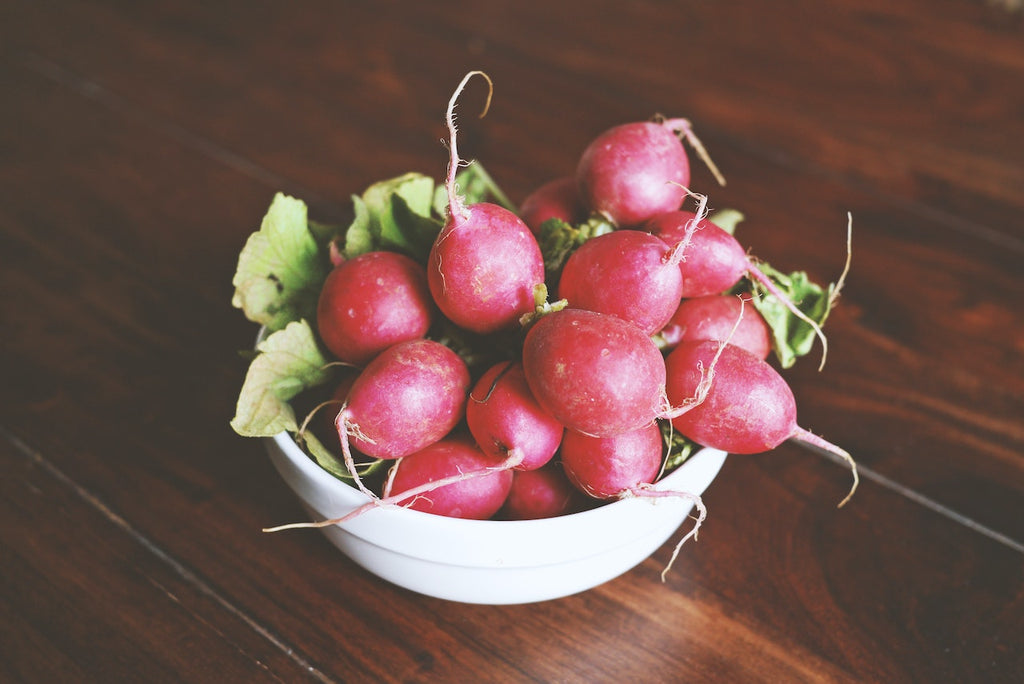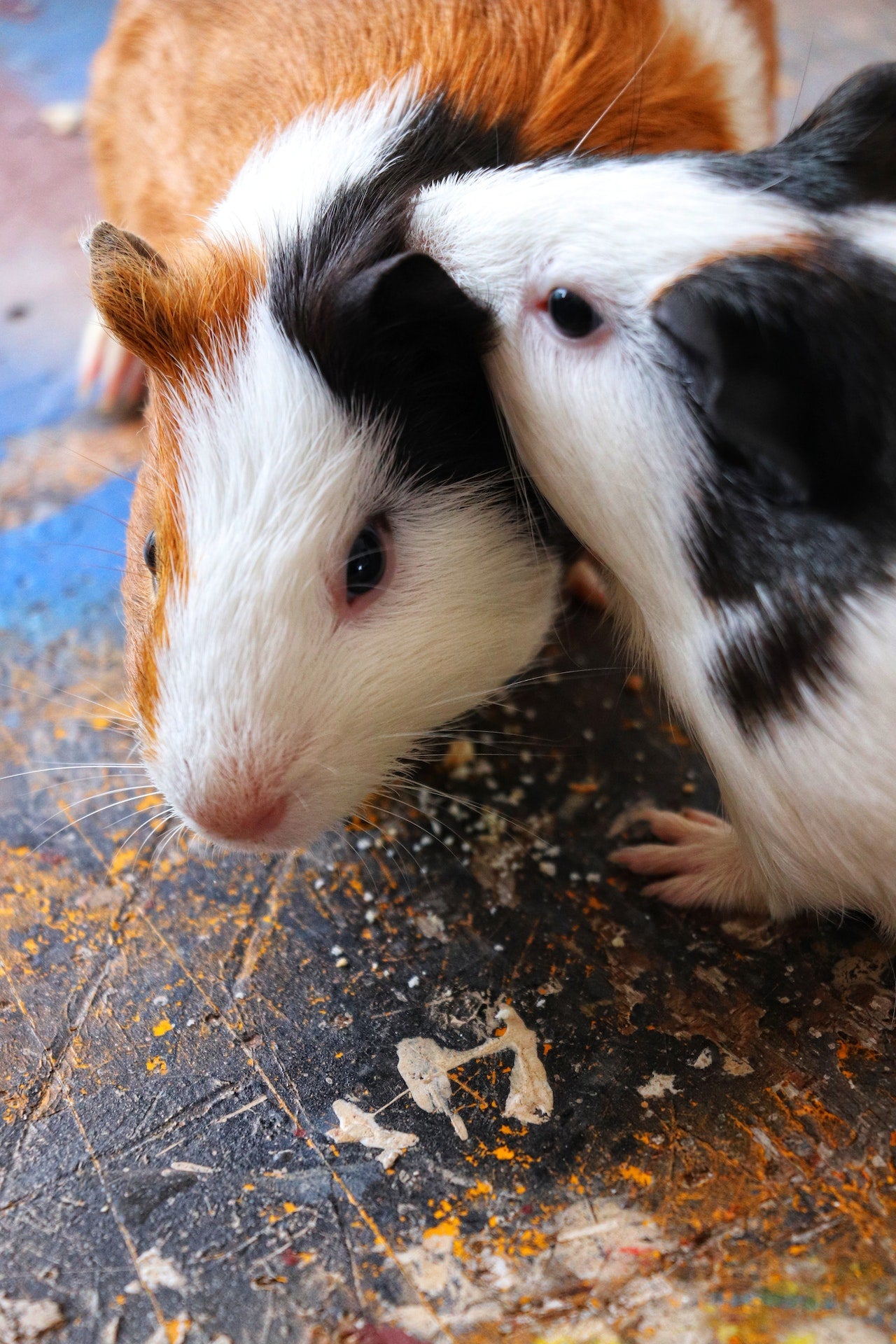
Radishes are a group of root vegetables with light-colored, crunchy flesh, variable skin color, and an almost spicy, peppery taste. They vary in shape from short and round to long and narrow, and they also come in different colors. There is a classic white radish, and in addition to that, there are pink, red, brown, purple, and black radishes that can be found in multiple stores.
Radish does not only give your dishes a pleasant spiciness, but it is also healthy thanks to the valuable nutrients found in them. Whether raw as a crunchy snack or in a salad, the root vegetables are a real all-rounder. Radish also owes its sharp taste primarily to the mustard oils it contains. These have been shown to kill pathogens such as bacteria and viruses and, thus, play an important role in a strong immune system. They are also said to be able to strengthen the liver, bile, and digestion. However, radish contains even more substances that make it healthy. Can guinea pigs eat radishes? Can radish offer any nutrient benefits to guinea pigs?
Can guinea pigs eat radishes?
Yes, guinea pigs can eat radish but it should only be in moderation. Radish, a root vegetable is enriched with a lot of beneficial nutrients which are needed to keep the well-being of your little cavies healthy. However, radish alone can not provide a suitable balanced diet for your little cavies which is why it should be mixed with other vegetables. Radish is also enriched with calcium, sodium, and oxalic acid, all of these nutrients are only needed in tiny amounts by your guinea pigs, unfortunately, radish thigh-high proportion causes urinary complications for your little cavies.

In what proportion should radish be given to guinea pigs
Radishes are known for their pleasant sweetness and nutritional benefits, due to this, guinea pigs can gobble as many as they like ignoring the consequences of their actions. However, it is the responsibility of pet owners to regulate and provide only the amount suitable for their daily or weekly consumption rather than leaving them alone to feast on the garden of radishes. Hence, radish should be given to guinea pigs 1-2 times per week for a healthy diet. For an effectively balanced diet, a normal serving that consists of a small radish or half a cup of radish is enough for a healthy guinea pig.
If you are just introducing this vegetable to your pets, you should feed less of this amount to them and also place them under 24-hour observation to watch out for any possible allergy reaction that can arise from feeding radish to guinea pigs.
What are the health benefits of feeding radish to guinea pigs?
Radishes are multipurpose and nutrient-rich vegetables. They are an excellent source of vitamins, essential minerals, and fiber. Due to the high metabolic activity of the vegetable it is suggested that radish should always be consumed in the daytime. Also, It is incredibly low in calories and remarkably high in fiber, making it an ideal snack for digestion. Here are some of the benefits of feeding radish to guinea pigs:
- Low in calories: Radishes are low in calories, with just one medium radish containing only about 1 calorie. This makes them a great snack for guinea pigs watching their calorie intake.
- Rich in vitamins and minerals: Radishes are a good source of vitamins C and B6, as well as minerals such as potassium, calcium, and magnesium.
- Good for digestion: Radishes contain fiber, which can help improve digestion and prevent constipation from your little cavies' stomach. They also contain compounds that have been shown to have a mild laxative effect, making them a natural remedy for digestive problems.
- Antioxidant properties: Radishes are rich in antioxidants, which can help protect their body against damage caused by free radicals and lower the risk of chronic diseases such as cancer for your pets.
- Good for skin health: Radishes contain vitamin C, which is important for skin health. Vitamin C helps produce collagen, a protein that provides structure to the skin and protects the skin from damage caused by UV radiation. These nutrients also help your cavies to improve their immune system and fight against scurvy disease.
- Lower blood pressure: Radishes contain potassium, a mineral that can help your guinea pigs help regulate their blood pressure and reduce the risk of heart disease.
It's important to note that radishes can be slightly spicy and may cause digestive discomfort for little cavies. Therefore it is best to start with a small amount and gradually increase the serving size to see how their body reacts. Additionally, it's always a good idea to talk to a healthcare professional before making significant changes to their diet.
Possible health risks of feeding radish to guinea pigs
Urinary problem
Radish is known to contain a decent amount of calcium compared to other root vegetables, and overfeeding them with this fruit may lead to kidney or bladder stones. If your cavies have a history of kidney or bladder stones, it is essential to give it to them in low quantity
Digestive problem
Overfeeding radish to guinea pigs can also lead to digestive problems like diarrhea. Also feeding unwashed or not fresh radish leaves to your pets may result in stomach upsets and other digestive problems
Can guinea pigs radish leaves, tops, and sprouts
Yes, guinea pigs can eat all parts of radishes since they do not contain any chemical substances that can be poisonous to them. On the contrary, all the various parts of radish are enriched with nutrients that can help your guinea pigs live a healthy lifestyle. However, pet owners should be careful with the amount that is given to them to avoid any possible health risks arising. Also, it should be raw, fresh, and thoroughly clean before you serve it to them.
Conclusion
Guinea pigs can eat radishes and various parts of this root vegetable like the stem, tops, leaves, sprouts, and the like. However, it should only be served in moderation and also with other vegetables in other to provide a balanced diet for your little cavies. The benefits and the possible health risks attached to these vegetables have been listed above. Therefore, pet owners should endeavor to follow the instructions listed above to keep their little cavies healthy.



